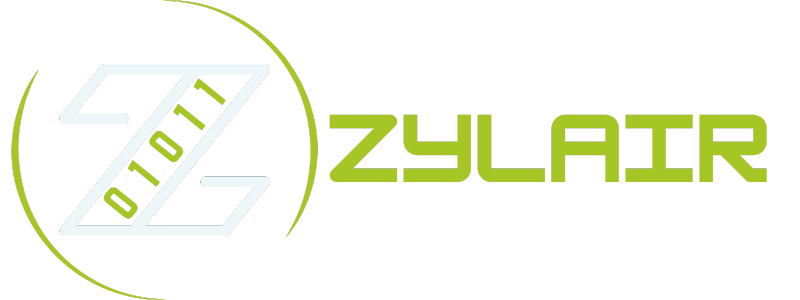Would Your Current Safety Process Hold Up If the Auditor Arrived Tomorrow?
I’ll be completely honest—back in my early days as an engineering manager, the thought of a surprise health and safety audit was enough to make my blood run cold. Not because we were careless or negligent, but because our system at the time depended heavily on paper forms, checklists that got misplaced, and manual data entries completed “when there was time”. It worked, to a degree, but barely. This makes me wonder—if I felt anxious knowing our system had shortcomings, how many fellow professionals might secretly feel the same about theirs?
Let me pose a practical but slightly uncomfortable question: if an inspector turned up unannounced at your plant tomorrow, could your safety system stand confidently on its own two legs? Are your procedures clear, documentation accurate, and presentable—all without that frantic dash to the filing cabinet or frantic phone calls attempting to confirm something was actually done? It’s a tough question, but one we all need to ask ourselves.
In my experience, safety isn’t about box-ticking or compliance for the sake of it. It’s about having a transparent, robust, and intuitive system that proactively and consistently protects our people. Anything less than that just isn’t good enough—not for me, not for you, not for any reputable organisation.
The High Price of Sticking Your Head in the Sand
Here’s a reality I learned the hard way—ignoring gaps or deficiencies in your safety management workflow has a ripple effect. Let’s first talk about the human impact. Every time a safety measure slips through the cracks, it is potentially someone’s health and wellbeing on the line. And let’s face it, that responsibility rests squarely with us as leaders and decision-makers.
On the financial front, underestimating the importance or efficiency of safety compliance isn’t just risky—it can become incredibly costly as well. Fines for non-compliance have escalated hugely in recent years in both the UK and USA. Even minor infractions can lead to hefty financial penalties or, in severe circumstances, legal proceedings. It’s money that could be so much better invested elsewhere—training, innovation, or improved processes—rather than wasted on avoidable fines.
Operationally, an inefficient safety system is painfully disruptive—I’ve been there myself. Every piece of misplaced paperwork, every missed inspection, eats away at productivity and drains staff morale. Instead of engineers and technicians focusing on their core tasks, we’re redirecting valuable brainpower and time into chasing forms, reconciling documents, and dealing with avoidable incidents. It’s tiring, frustrating, and entirely unnecessary in a modern, digital-first age.
Why are We Still Relying on Pen and Paper?
I fully owned up to this—until recently, like many in manufacturing, we relied heavily on traditional, paper-based safety documentation methods. Yes, the old-fashioned clipboard-and-pen strategy. It’s familiar, it’s straightforward, and there’s something reassuring (at least initially) about a physical piece of paper. But this “comfort” comes at substantial hidden costs. Papers pile up, ink fades, signatures are smudged or illegible, files get lost or misfiled—and crucially, data remains static and unsearchable.
Now, imagine shifting to a modern digital safety system—safety compliance software that does most of the heavy lifting for you. It might sound daunting at first, and I won’t pretend it doesn’t require an initial effort. But here’s the reality check: once we implemented our own digital safety systems, I found myself thinking repeatedly, “Why didn’t we do this sooner?”
A digitally automated safety approach integrates easily into daily workflows. It replaces physical checklists with simple, intuitive screens on phones or tablets. It tracks who has completed inspections, when they completed them, and precisely what was recorded. Not because we don’t trust our teams, but because clear accountability and transparency build greater trust among everyone involved. It also flags upcoming inspections, missing reports, or overdue actions. Leaping from paper to software isn’t just an organizational shift—it’s the difference between crossing your fingers hoping that form turned up, and confidently knowing your data is instantly there when you need it.
Real-World Results: Audits You’re Proud Of, Not Dreading
The single greatest eye-opener for me after adopting health and safety automation was our first audit. I’m accustomed to auditors coming in prepared with tough questions, ready to grill us over paperwork and potential oversights. But when the inspector arrived post-automation, the day was, dare I say, refreshingly unremarkable. Reports were instantly retrievable, signatures clearly documented, inspections reliably timestamped and tracked. Our teams could readily navigate digital safety dashboards and show auditors first-hand evidence without effort or panic.
Reporting speed improved dramatically. What used to take hours or even days searching through dusty filing cabinets and painstaking data entry now took mere minutes. Digital dashboards gave us immediate visibility of our compliance status, continuously highlighting what was working well and what required focus.
Perhaps most validating of all, we saw tangible improvements in safety culture and metrics across the board. Employees genuinely preferred the simplicity and clarity provided by digital systems. They felt confident, better informed, and safer at work. Incident frequencies decreased simply because transparency had increased, improving our accountability and engagement across the workforce.
In retrospect, the decision to implement digital safety systems was less a technology investment and more a trust-building initiative. Employees now see audit days not as occasions for dread or anxiety, but moments to shine, to showcase the robust safety culture they’ve actively shaped and embraced.
If you’re considering making the switch—or even if you haven’t been yet—I urge you to open the conversation with your team, your shop floor, and your peers. Health and safety automation isn’t about complicating processes with tech jargon; it’s about investing in simpler, smarter ways to protect your team, your reputation, and your bottom line.
If you’re clinging to paper-heavy processes that keep you awake at night ahead of audits, consider this your gentle nudge. There is an easier way and we’ve never looked back since we took that leap. Trust me, neither will you.




